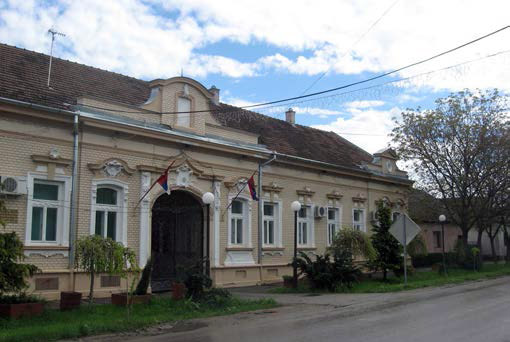 Sečanj is a settlement in Serbia in the Municipality of Secanj in the Central Banat Administrative District. According to the 2011 census, there were 2107 inhabitants. The settlement is known for some other names in other languages: mađ. Szécsány or Torontálszécsány, nem. Setschan or Petersheim, rum. Seceani. The larger settlements in this region are due to the expulsion of the Turks from Banat in the 18th and 19th centuries. The majority of the inhabitants were Germans, who after the Second World War were evicted and colonized the population from Bosnia and Herzegovina and other regions.
Sečanj is a settlement in Serbia in the Municipality of Secanj in the Central Banat Administrative District. According to the 2011 census, there were 2107 inhabitants. The settlement is known for some other names in other languages: mađ. Szécsány or Torontálszécsány, nem. Setschan or Petersheim, rum. Seceani. The larger settlements in this region are due to the expulsion of the Turks from Banat in the 18th and 19th centuries. The majority of the inhabitants were Germans, who after the Second World War were evicted and colonized the population from Bosnia and Herzegovina and other regions.
In the history of Sečanj, he changed his name several times: 1717 – Sečanj (Sechan). 1719. – Szécsány 1888. – Torontal- Szécsány 1922. – Sečanj.
Sečanj has 27 houses in 1717 and belongs to the then Beckerečki distrikt Timisoara Banat. and in 1727 it has only 23 houses. But in 1773 he had 113 houses, and it is thought that in the fifties of that century, the border guards of the seas arrived. In 1779, it was merged with the Torchstone coin of Vienna.
The Serbian population is 1895. moved out of Sečje at the border of the German-Banat regimen and founded the settlement of Samos. The Germans from the Toronto Commitee moved to their places in Sečanj, from Nova Peć, Hajfeld, Marijinfeld and Belid, who bought the property from the Sečanskih Srba. In 1811 there were already 905 souls in Sečanj. In 1807, 201 pupils were taught and in 1823, when the number of inhabitants was 1306, there were 298 pupils. In 1824, the Seçan municipality signed a contract with the secular priest, to whom Sačanj was a church priest, according to which Secanj received his priest.
In 1832 there were 1606 Catholic, 1 Evangelical and 6 Orthodox inhabitants, who engaged in farming and fishing. 1831 g. Fifty-three died of cholera illness and in 1836 14 victims. In 1867 and 1876 he received the Securities Market Law. In 1869 the first school commission was elected, and in 1870 the school was declared municipal. That same year there was a great flood, due to which 300 souls moved to the Military border and settled in Elizenheim. In 1889, a large wooden bridge was built across the Tamis, providing traffic between the upper and lower Torontal. In 1905 there was a great flood, after which the embankment was elevated, and the regulation was completed. Sečanj was merged in 1919 in Toronto-Tamiška County. According to the census on January 31, 1921, there were 2343 inhabitants out of which were; Serb-66; Slovaka-8; Other Slovene-4; Rumuna-24; Germans-2090; Hungarians-104; The others-47.
